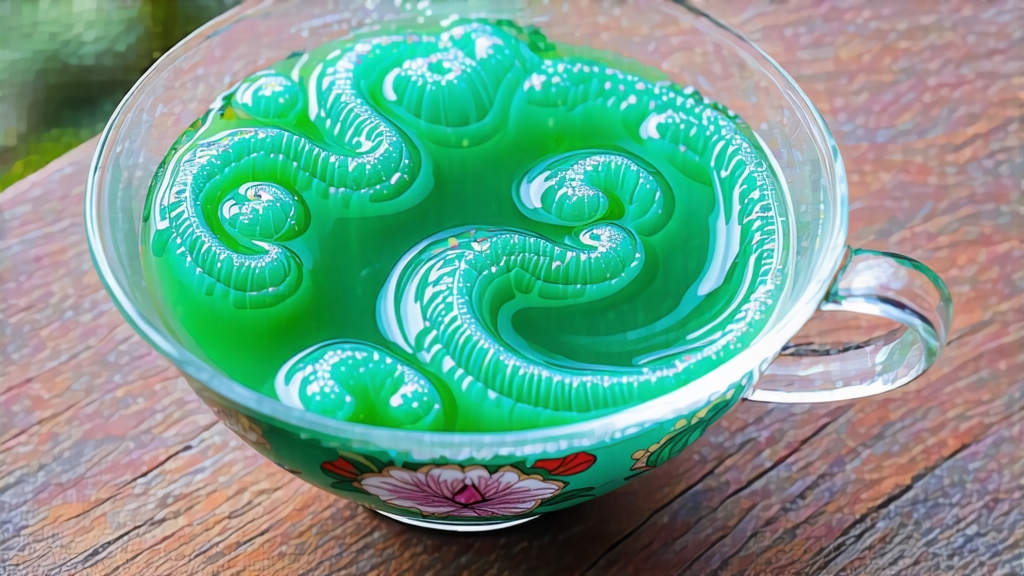
Biluochun, literally “Green Snail Spring,” is one of China’s ten most celebrated teas, yet among green teas it remains the most poetically compact: tiny, spiral-shaped buds that smell of fresh peaches and lake mist. To international drinkers accustomed to the needle elegance of Longjing or the foresty depth of Taiping Houkui, Biluochun offers a gentler, almost flirtatious introduction to the Chinese green tea imagination. Its history, terroir, and craftsmanship weave together imperial legend, biodynamic gardening, and microscopic firing skills that have been refined since the late Ming dynasty.
Historical whispers place the tea’s birth on Dongting Mountain, an island range rising from Taihu Lake in Jiangsu Province. During the reign of the Kangxi Emperor (1661-1722), local monks sent the earliest spring picking as tribute. The emperor, struck by the infusion’s vivid jade color and the fact that the leaves resembled tiny snails, christened it “Biluochun,” replacing its humbler market name “Xia Sha Ren Xiang” (“Scary Fragrance”) that farmers had used to describe its arresting aroma. From that moment, the tea became a palace favorite; Suzhou scholars soon composed verses comparing its perfume to the “breath of spring courtesans,” an image that still shapes its romantic branding today.
Although Biluochun is officially a single-name tea, the micro-region produces three distinct stylistic tiers. The apex is “Original Grove” Biluochun, picked from a 200-hectare core on Dongting’s East and West Mountains where fruit trees—peach, plum, apricot—intercrop with tea bushes. The blossoms deposit pollen on young leaves, adding a natural fruity note impossible to replicate elsewhere. The second tier, “Lake Bank” tea, comes from lower slopes where the mist is thick but fruit trees sparse; it retains the curly shape yet delivers a lighter, more grassy cup. The third tier, “Extended Jiangsu,” is cultivated north and west of Taihu; larger mechanized fields generate a bulk commodity that still bears the protected name but lacks the signature aroma. Discerning buyers look for the tiny, downy buds that curl like snail shells, each no longer 1.5 cm and silver-green in color with visible white tips.
The crafting cycle begins before dawn on Qingming festival, when the air is 10 °C and buds are 1.5–2 cm long, still unopened “sparrow’s tongue” shoots. Pickers wear cotton gloves to avoid hand oils; leaves are laid in shallow bamboo baskets lined with nettle cloth to prevent bruising. Within four hours the harvest reaches the village workroom where the master applies the classic “kill-green” pan-firing technique unique to Biluochun. A 180 °C wok is swabbed with fresh peach leaves; their moisture buffers direct heat and imparts a subtle orchard note. The tea master tosses 250 g of buds in a spiral motion, using only the fingertips, for precisely 3–3.5 minutes while the leaf temperature drops from 85 °C to 45 °C. This short, fierce exposure denatures enzymes without baking the bud, locking in a jade-green chlorophyll that later infuses into a shimmering liquor. Immediately after firing, the leaves are rolled on a bamboo tray: five clockwise circles, five counter-clockwise, repeated for eight minutes under the pressure of a cotton cloth. The motion must be loose enough to preserve the downy hairs yet firm enough to coax the iconic spiral. Finally, a gentle 60 °C re-roast for twenty minutes reduces moisture to 5 %, rendering the tea shelf-stable while still pliable.
Water choice is critical when steeping Biluochun abroad. The soft minerality of Evian or Volvic approximates the sweet, low-TDS lake water of Taihu; avoid hard spring waters that flatten aroma. Heat water to 75 °C—any hotter scalds the downy hairs and releases tannic harshness. Use a tall glass or a 150 ml gaiwan; glass reveals the ballet of leaves slowly unfurling like green snails waking from hibernation. A 1:50 leaf-to-water ratio (3 g to 150 ml) allows three infusions. The first pour, 15 seconds, lifts peach and orchid notes; the second, 25 seconds, adds a snap-pea sweetness; the third, 40 seconds,